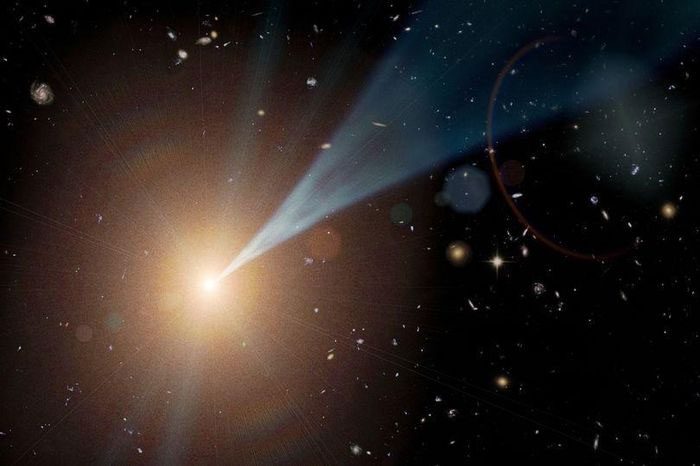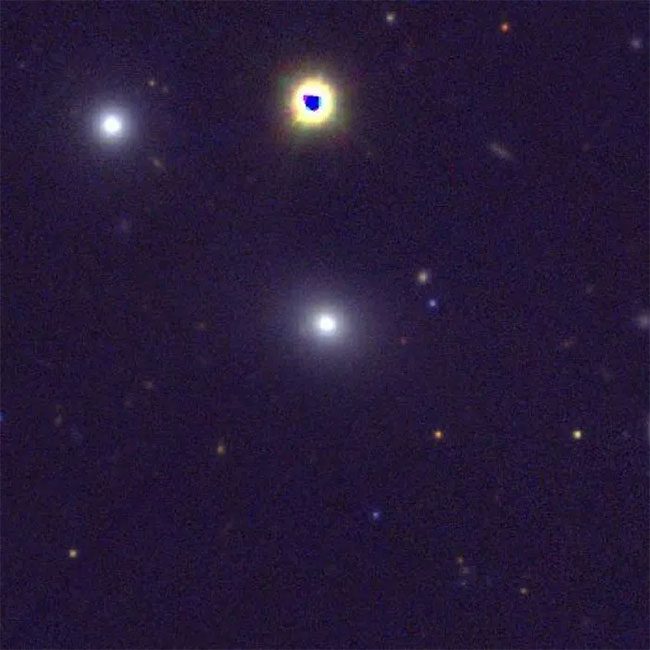According to a recent study published by the Royal Astronomical Society (RAS), a galaxy has undergone a morphological transformation due to unique activity within its core, becoming an extremely rare giant radio galaxy in the universe.

Galaxy PBC J2333.9-2343 emits jets traveling near the speed of light. (Photo: RAS).
Galaxy PBC J2333.9-2343 is located approximately 656,844,372 light-years from Earth and was previously classified as a radio galaxy. While galaxies emitting radio waves are quite common in the universe, only a few hundred galaxies have radio jets longer than 2.2 million light-years. Such giant radio galaxies are considered rare in the cosmic landscape.
However, astronomers have recently discovered that PBC J2333.9-2343 has changed its morphology, transforming into a giant radio galaxy with a blazar core and a diameter reaching up to 4 million light-years.
A blazar is an “active galactic nucleus” (AGN), emitting gamma rays and radio waves at nearly the speed of light. Blazars possess immense energy and are regarded as one of the most powerful phenomena in the universe.

Image of galaxy PBC J2333.9-2343 (bright spot at the center of the image). (Photo: RAS).
“Blazars emit jets composed of charged fundamental particles, such as electrons or protons, traveling at nearly the speed of light. They move in circular paths around a strong magnetic field, emitting radiation across the entire electromagnetic spectrum,” the Royal Astronomical Society (RAS) explains.
The new discovery regarding PBC J2333.9-2343 stems from the observation that the jets emitted from this galaxy have unusually intensified and shifted “by an angle of up to 90 degrees,” directed towards Earth.
“This galaxy exhibits unusual characteristics that warrant further observation,” said Dr. Lorena Hernández-García from the MAS Astrophysics Institute (Chile), the lead author of the study.
Explaining the morphological transformation of PBC J2333.9-2343, the Royal Astronomical Society suggests that the blazar in PBC J2333.9-2343 may originate from a black hole at the center of the galaxy. Once directed towards Earth, the jets from the blazar core can easily increase in intensity, turning an initially ordinary galaxy into a giant radio galaxy.
The research team is still uncertain about what caused the shift in the emitted jets. They speculate that PBC J2333.9-2343 may have merged with another galaxy or that the core of the galaxy has undergone a spontaneous explosion.
To study this unusual galaxy, astronomers had to observe it across a wide electromagnetic spectrum, utilizing data obtained from leading observatories in Germany and the United States. They then compared the properties of PBC J2333.9-2343 with other galaxies using data provided by the ALeRCE project in Chile.





















































